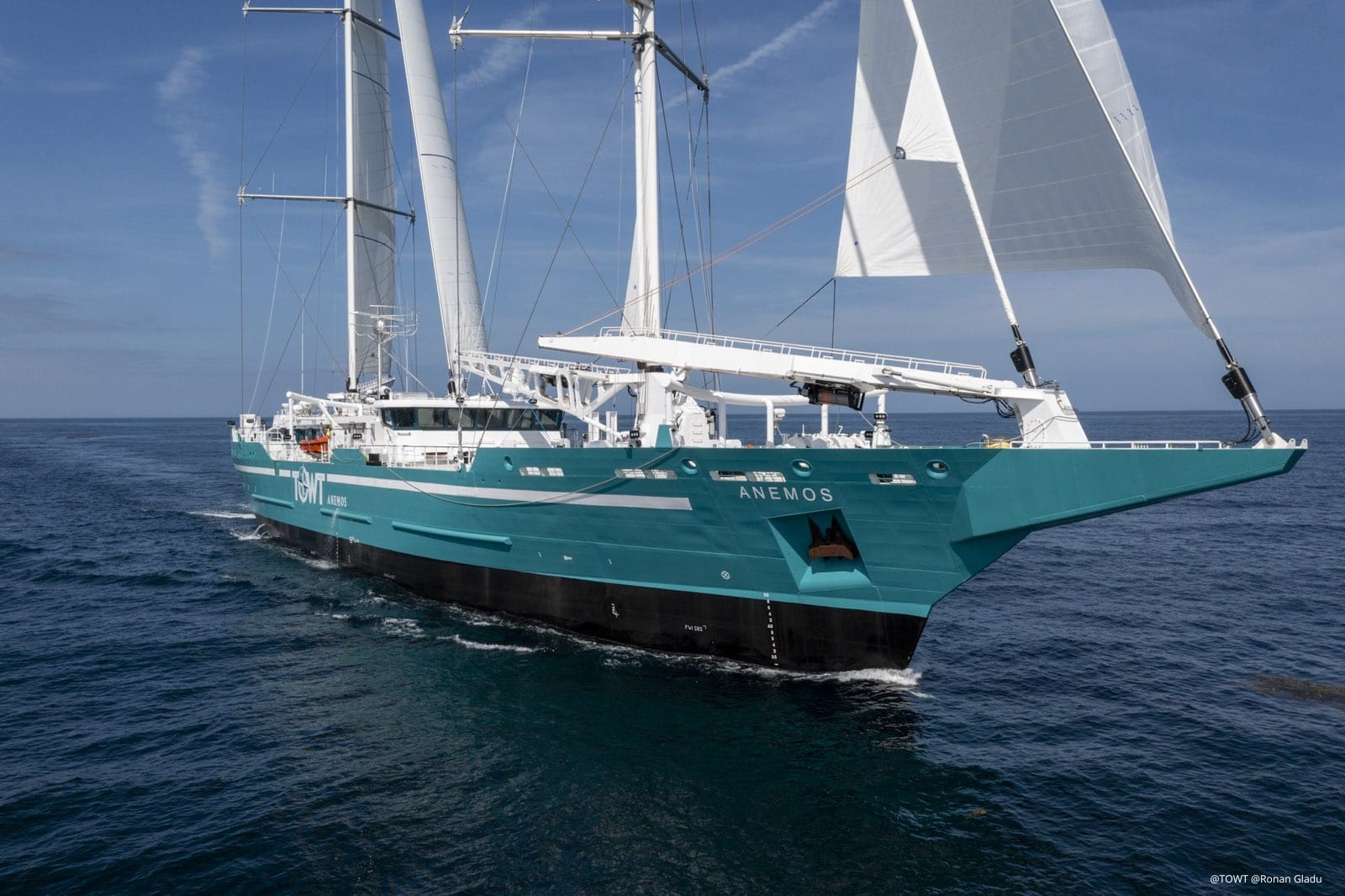This website uses cookies so that we can provide you with the best user experience possible. Cookie information is stored in your browser and performs functions such as recognising you when you return to our website and helping our team to understand which sections of the website you find most interesting and useful.
G.H. Mumm reimagines the age of sail in green shipping scheme
Champagne G.H. Mumm’s cutting-edge, low-carbon shipping initiative recently carried its first cargo from Le Havre to New York.

Sustainability initiatives often come with the excitement of new technology. Whether photovoltaic cells, innovative new packaging materials or intelligent climate adaptations, they frequently appear as a leap into the unknown. Yet history can serve as inspiration too. G.H. Mumm is reducing its carbon footprint by reimagining the age of sail.
Transporting wine bottles is a considerable challenge in terms of sustainability. Around 90% of the world’s goods are traded by sea, and transport is predicted to account for 15% of global carbon dioxide emissions by 2050. Ocean freight also produces 18% of the world’s sulphur emissions. The challenge of reducing these emissions is particularly acute for sparkling wine producers, who require heavier bottles that would therefore generate more pollutants in transport.
On completing its first transatlantic sail crossing, G.H. Mumm saw a reduction of more than 90% in emissions compared to conventional shipping. The 14-day crossing, which began in Le Havre, France, in mid-August, brought G.H. Mumm’s Champagnes to New York. It is the beginning of a scheme that, the house intends, will see sailing cargo become its primary route to the US market. G.H. Mumm’s partner is TransOceanic Wind Transport (TOWT). Since meeting in 2020, the ambitious partnership has progressed at speed, with G.H. Mumm signing a commitment letter with the young company in 2021. This allowed TOWT, based in Le Havre, to begin the construction of its first sailing vessel.
Anemos is the largest sailing cargo ship of modern times. At 81 metres in length, it is comparable to the clippers of the golden age of sail: Cutty Sark, for instance, is 85m long. With its six cargo holds, Anemos can transport about 1,000 tonnes of cargo on each crossing. G.H. Mumm now plans to make a shipment using the vessel every month, with volumes increasing as TOWT’s fleet expands.
Pushing the boundaries
The sail revival proposition certainly has an air of romance to it. It builds on G.H. Mumm’s prior support of boundary-pushing initiatives. From supporting Jean-Baptiste Charcot on his Antarctic expedition in 1904 to 2018’s Cordon Rouge Stellar, a wine designed to be consumed in outer space, the house has long pioneered innovation in the field of transport.
However, it also aligns with a bold drive towards sustainability. Among G.H. Mumm’s goals is a move to fully recyclable, reusable or compostable packaging by 2025; expanding its roll-out of regenerative viticulture that began in 2021; and, most importantly, achieving carbon neutrality by 2050.

On that final point, the collaboration with TOWT is a huge step forward. Despite reducing transport emissions by 30% since 2019, a game changer was needed. “In transport, we’ve been on the right track for several years,” explains Sonia Le Masne, the house’s sustainability director, “but we needed a breakthrough solution in the maritime sector.”
Above all, the slick new vessel seems to capture G.H. Mumm’s identity. Combining a high-quality product with a sustainable ethos and a bold concept suits the house to a tee. “There’s real satisfaction in seeing these terroir products benefit from lowcarbon shipping,” says Guillaume Le Grand, co-founder of TOWT. “It’s the right thing to do.”

